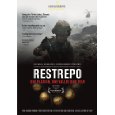
Inspired by the extraordinary ignorance of all the Republican participants in the primaries, less Ron Paul, a FACT has emerged that is of such importance that I am moved to upgrade the Event Report I did on 27 September 2010, recording the wisdom and knowledge of MajGen Robert Scales, USA (Ret) PhD, speaking at the Brookings Institution. Notes taken and published with permission.
Memorandum (3 Pages)
Below: full text online

EVENT REPORT: MajGen Robert Scales, USA (Ret), PhD at the Brookings Institution, 27 September 2010
TOPIC: “The Next Generation of Small Unit Warfare [Posted with Permission of the Event Sponsor]
Robert H. Scales, Jr. is a retired U.S. Army Major General and former Commandant of the US Army War College. He now works as a military analyst, news commentator, and author.
Review: Firepower In Limited War addressed the disconnect between troops engaged in low intensity conflict, and the national and defense intelligence communities. He has also authored Future Warfare, Yellow Smoke: the Future of Land Warfare for America’s Military, and The Iraq War: A Military History.
Strategic Studies Institute Page
DuckDuckGo Results for General Robert Scales
Speaking to around 50 people under the auspices of the 21st Century Defense Initiative at Brookings, the presentation was summed up at the very end as General Scales offered his opinion on the essence of the four World Wars:
World War I: Chemistry World War II: Physics (especially radar)
World War III: Information (the Cold War) World War IV: Human Factors
His focus is on the reality that 4% of the “total force,” the engaged infantry, bear 80-81% of the total casualties, but receive less than 1% of the over-all acquisitions and training budget. He calls this, rather memorably, a “cosmic incongruity.”
The 900-lb gorilla in the room, the lack of integrity [in sense of holistic integrated planning, programming, and budgeting] across the U.S. Government, was alluded to but not confronted directly. It was acknowledged that there is little profit to be made in helping create and field anything directly related to the individual, but the larger issue of demanding that “whole systems” be developed with one party equally responsible for assuring efficacy at the lowest level (General Scales called this layering) as well as the highest satellite levels, was avoided.
Instead, an extended discussion occurred of how enamored politicians and senior government executive are of talking about strategic implication and effects and costs of war, while ignoring the tactical level of warfare.
 |
He strongly recommended the DVD Restrepo, per Amazon, “a feature-length documentary that chronicles the deployment of a platoon of U.S. soldiers in Afghanistan's Korengal Valley. The movie focuses on a remote 15-man outpost, “Restrepo.” It was considered one of the most dangerous postings in the U.S. military. This is an entirely experiential film. The only goal is to make viewers feel as if they have just been through a 90-minute deployment. This is war, full stop. The conclusions are up to you. Click on DVD Cover or here for the Amazon Page. |
Among the gems from this presentation:
[Because of the failure of US intelligence] our soldiers have to find the enemy by walking into them, at great cost. Since dead Americans are known to be our center of gravity, this is how the enemy chooses to engage us, at the tactical human level.
Over 34,000 have been maimed to date.
“Soldiers have no way to own the third dimension and since the Taliban holds the high ground they [the Taliban] have the observation advantage.”
A brigade area of operations is the size of New Jersey.
Counterfire from small outposts is with weapons designed and built in 1931, e.g. the 120mm mortar.
Small Unit Training is still a mass production process [training to the lowest common denominator].
All other services and units (e.g. armor) have heavy investments in simulations, but not small unit leaders. [Note: X-Box Live would seem to be a natural for this role.]
80% of small unit leadership is about decisions made in extremis, life and death decisions. It turns out that 28-32 year olds, not the younger sergeants, make the best small unit leaders. [NOTE: the CEO part of the brain starts to kick in after 25.]
The ISR [Intelligence, Surveillance, and Reconnaissance] community keeps trying to address tactical problems with strategic systems.
What Needs to Be Done
Need to focus on the tactical as a national challenge, the services cannot do it in their current mode [as stove-pipes with Air Force and Navy fighting to keep budget share.]
DoD [and White House] need to understand the tactical implications of strategic decisions and the strategic implications of tactical outcomes (e.g. ineffectiveness for lack of proper training, equipping, and organizing.]
DoD needs a small unit senior executive steering group that can pick up where Future Combat Systems (FCS) broke down, and champion the needs of the individual and the small unit. [NOTE: one can hardly not mention SLA Marshall’s The Soldier's Load and the Mobility of a Nation.]
Need a national small unit of practice that can embrace law enforcement and others who do small unit operations in violent arenas.
Need a small unit Top Gun or Red Flag, with 20% rather than 1% of the training and equipping resources earmarked for this function.
Need to test readiness at the Small Unit Level rather than the division or even battalion levels.
During the Q&A the following were raised rather delicately, with no real closure on the fact that DoD is the way it is because the military-industrial-intelligence-congressional complex wants it that way.
Q. No incentive to create low cost low profit capabilities for the individual or small unit.
A. Correct. The ability of a squad to send a micro-UAV it controls into the air, and to be able to see and exploit what it shows them, is priceless. Need to layer “eyes on” [Note: our interpretation of this is that the same contractor that gets the award to build battalion, division, corps, and national systems needs to be required, as the price of admission, to earmark 20% for the squad to company level. See the RAND report on company commanders creating their own intelligence cells out of hide—DoD and the IC are out of touch with the real-world needs—and solutions—below the division level.]
A. Small unit leaders are WORTH $90K a year—the total cost over lifetime of a maimed veteran is on the order of $14-15 million.
Q. I have more situational awareness on the beltway that I did in the battlespace in Iraq. Implied question: why can’t be do that for our troops?
A. “Complexity of land warfare is orders of magnitude more difficult than other forms of war [e.g. air, sea, submarine, or space.]
General observation: the session stopped where it could have usefully begun. The conversation that needs to be had is about the lack of integrity and therefore the inability to actually appropriate and allocate funds and brainpower where they need to be. The Air Force thinks that handing off lower levels of ISR to the Army gets them off the hook, and perhaps it does, but it does not get OSD off the hook for permitting $75 billion a year to be spent in a manner that is still too focused on strategic technical collection that delivers “at best” 4% of what the President needs and nothing for everyone else; that cannot be processed across all systems in relation to the same square klick on the ground, etcetera.
See Also:
Reference: Intelligence Support to Small Arms Acquisition–A Brilliant Indictment
Graphic: OSINT Support to Four Levels of Analysis
Graphic: Expeditionary Environment Analytic Model
Graphic: Threat Level Changes Depending on the Level of Analysis
1990 Expeditionary Environment Analytic Model
Search: Strategic Analytic Model
2010: Human Intelligence (HUMINT) Trilogy Updated
Search: The Future of OSINT [is M4IS2-Multinational]
2010 INTELLIGENCE FOR EARTH: Clarity, Diversity, Integrity, & Sustainability
Journal: LEXIS-NEXIS OSINT Kiss to CIA/OSC



